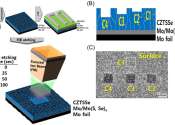A cool approach to defect-free solar cells
Chemists regularly use high temperatures to make things happen, but sometimes keeping cool can work better. Researchers at KAUST are discovering that a low-temperature approach can make better single crystals for use in solar ...
Jun 1, 2020
0
7









